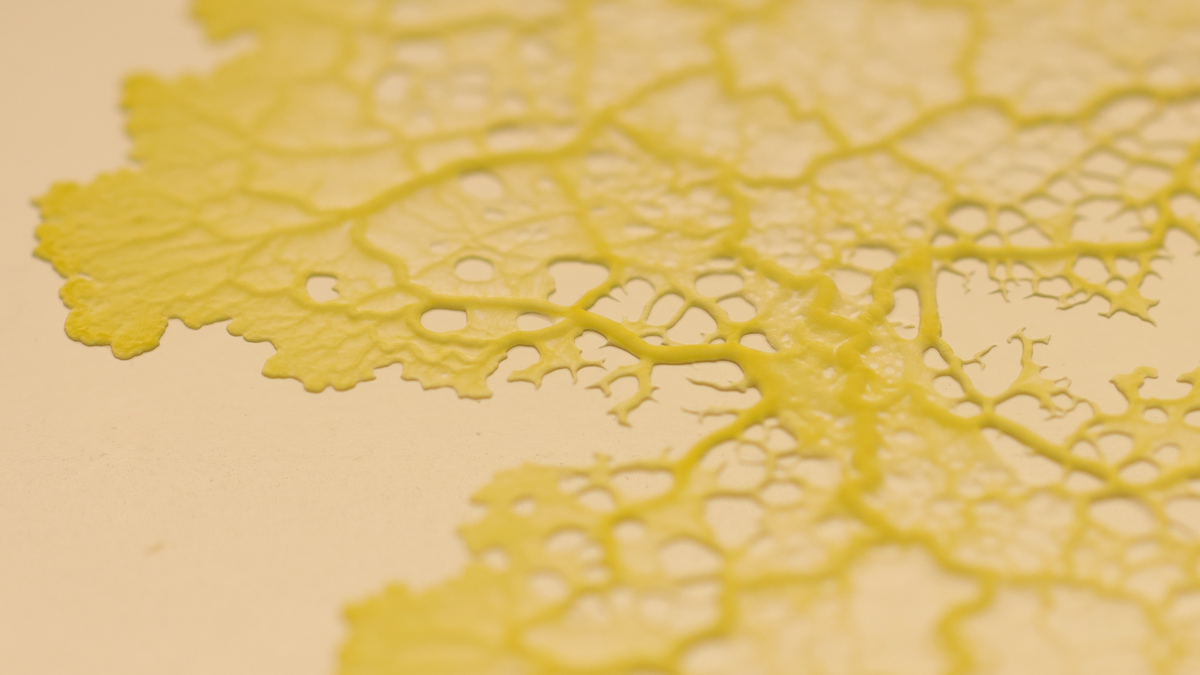
Dr. Karen Alim, head of the Biological Physics and Morphogenesis research group at the Max Planck Institute for Dynamics and Self-Organization in Göttingen, along with colleagues from Harvard and Madison, has uncovered the mechanism behind the complex behavior of the slime mold Physarum polycephalum. Their findings were recently published in PNAS.
Intelligence Without a Nervous System
Despite lacking a nervous system, slime molds can find the shortest path through a maze using a simple feedback mechanism. By sending information through its vein network via cytoplasmic flow, the slime mold strengthens the very pathways that lead to the most efficient route.
How Does the Slime Mold Process Information?
In a slime mold, liquid cytoplasm flows back and forth through its network of veins. Rhythmic contractions drive this peristaltic flow. To understand how information is transmitted, researchers examined the slime mold’s response to a local food stimulus.
They observed increased contractions in the veins, spreading the signal throughout the network. These contractions move at a speed matching the flow of cytoplasmic transport. Based on these observations, the team developed a mathematical model to explain how information travels:
- A stimulus releases signal molecules into the cytoplasm.
- The cytoplasmic flow spreads these molecules throughout the network.
- Simultaneously, the signal molecules enhance their own transport by increasing contractions, accelerating the flow.

Implications for Science and Technology
This simple mechanism alone explains the slime mold’s remarkable problem-solving abilities. It dynamically adapts its flow to the network’s size and consistently finds the shortest distance between two food sources.
Beyond biology, these findings have potential applications in bio-inspired technology. The principles of self-organization and decentralized decision-making seen in slime molds could be used to develop more efficient transport networks, improve robotics, and even advance artificial intelligence.
Future Perspectives
“We identified signal molecules and fluid-based transport as key components of communication without a nervous system, but most importantly, their interaction,” says lead author Karen Alim. “This simple principle might be at work in thousands of other organisms. For fundamental researchers like us, applying such self-organizing adaptations in technology is an exciting future challenge.”
Researchers hope that these findings will lead to breakthroughs in designing self-organizing artificial systems, particularly in robotics, urban planning, and network optimization.
Conclusion
The intelligence of slime molds challenges conventional notions of cognition. Their ability to process information and solve problems could inspire innovations in artificial intelligence, robotics, and network optimization. As research continues, these extraordinary organisms may hold the key to developing smarter, decentralized systems in the future.
Melden Sie sich bei unserem Newsletter an:
